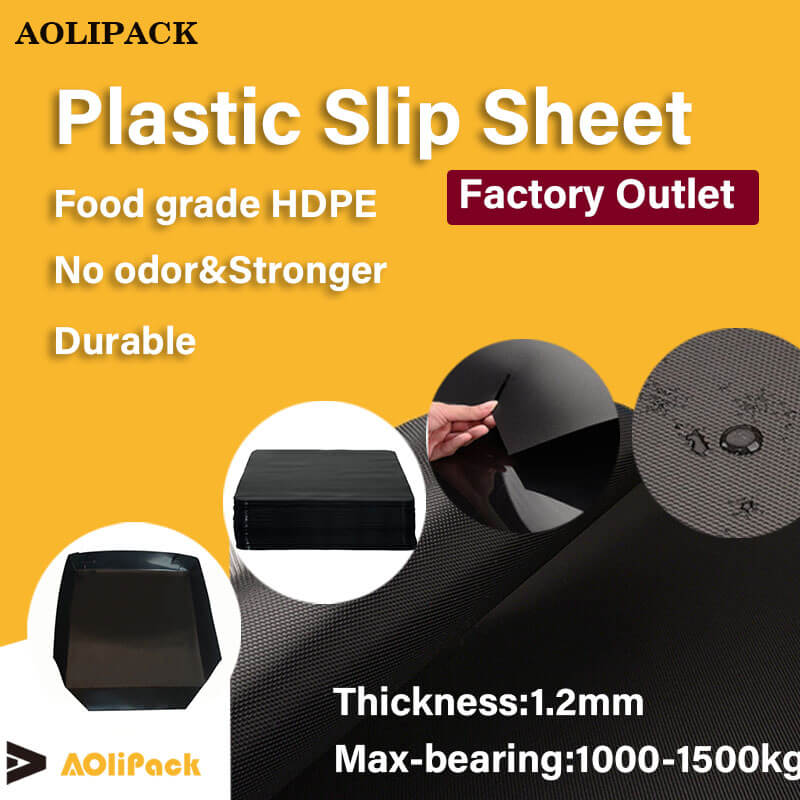Slip Sheets: The Smart Alternative Revolutionizing Material Handling
Introduction to Slip Sheets
Slip sheets represent one of the most significant innovations in modern material handling, offering a lightweight, cost-effective alternative to traditional pallets. These ultra-thin platforms (typically 0.5-3mm thick) are transforming logistics operations across industries by maximizing space utilization, reducing costs, and improving sustainability. As supply chains become increasingly complex and competitive, slip sheets are emerging as a strategic solution for efficient cargo handling.
How Slip Sheets Work
Unlike conventional pallets that require forklifts with standard tines, slip sheets utilize specialized handling equipment:
Load Formation: Products are stacked directly on the slip sheet surface
Securement: The load is stabilized with stretch wrap or strapping
Handling: Forklifts equipped with push-pull attachments:
Slide a thin metal plate beneath the sheet
Engage the lip/tab edge
Pull the entire load onto the forklift platform
This innovative method eliminates the need for bulky pallets while maintaining secure load integrity during transport and storage.
Material Options and Specifications
Material Type Thickness Load Capacity Cost Range Best Applications
Kraft Paper 0.8-1.2mm 1,500kg
0.50
−
0.50−1.20 Dry environments, one-way shipments
HDPE Plastic 1.5-3mm 2,500kg
2.00
−
2.00−4.00 Damp conditions, reusable logistics
Laminated Composite 2-3mm 3,000kg
3.50
−
3.50−6.00 Heavy industrial, harsh environments
Seven Key Advantages of Slip Sheets
Space Optimization
Saves 4-6 inches per load compared to pallets
Enables 15-20% more product per truck/container
Ideal for high-density automated storage systems
Significant Cost Reduction
90% cheaper per unit than wooden pallets
Eliminates pallet retrieval costs in one-way shipments
Reduces freight expenses through weight savings
Enhanced Sustainability
75% lower carbon footprint than wood pallets
Fully recyclable materials
No ISPM-15 fumigation requirements for international shipping
Improved Operational Efficiency
Faster loading/unloading cycles (up to 25% improvement)
Reduced product damage from better load stability
Seamless integration with automated systems
Hygienic Benefits
No wood splinters or nails
Easy to clean plastic options
Preferred for food/pharmaceutical applications
Global Standardization
Eliminates pallet size discrepancies (EUR vs. ISO)
Universally accepted in international trade
Safety Improvements
Lighter weight reduces worker injuries
No protruding nails or broken boards
Stable base reduces load shifting
Implementation Guide
Equipment Requirements
Forklift Attachments: Push-pull (
5
,
000
−
5,000−8,000) or clamp mechanisms

Optional: Stretch wrap machines, weighing systems
Training Considerations
Operator Certification: 4-8 hour training programs
Load Building: Proper stacking techniques
Safety Protocols: Handling procedures
Transition Process
Pilot Phase: Test with 5-10% of shipments
Cost-Benefit Analysis: Measure space/cost savings
Full Implementation: Gradual rollout across operations
Industry Applications
Retail & E-Commerce
Amazon fulfillment centers report 18% space savings
Big-box retailers optimize last-mile delivery
Food & Pharmaceutical
USDA-compliant plastic sheets prevent contamination
Meets FDA requirements for clean handling
Automotive Manufacturing
Ideal for just-in-sequence parts delivery
Withstands oil and chemical exposure
International Logistics
Saves
400
−
400−900 per ocean container
Avoids pallet fumigation and compliance issues
Future Innovations
Smart Slip Sheets: Embedded RFID/IoT sensors
Self-Locking Designs: Eliminate need for stretch wrap
Advanced Materials: Biodegradable composites
Automation Integration: Robotic handling systems
Conclusion
Slip sheets offer a compelling value proposition for modern supply chains, delivering measurable improvements in cost efficiency, space utilization, and sustainability. While requiring some initial investment in equipment and training, most operations achieve ROI within 12-18 months. As logistics continues evolving toward greater automation and environmental responsibility, slip sheet adoption is poised for significant growth.
For businesses evaluating material handling solutions, slip sheets present a strategic opportunity to:
Reduce transportation costs
Maximize storage density
Improve sustainability metrics
Enhance operational efficiency
In an era where every cubic inch and shipping dollar counts, slip sheets represent not just an alternative to pallets, but an upgrade to smarter, leaner logistics. Companies that adopt this technology now position themselves for competitive advantage in an increasingly efficiency-driven marketplace.







 wechat consulting
wechat consulting